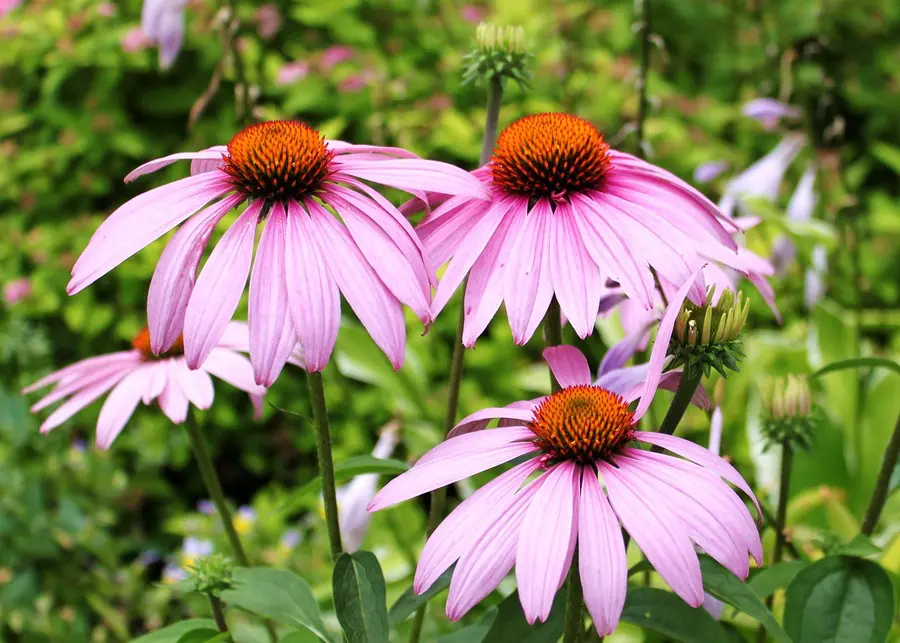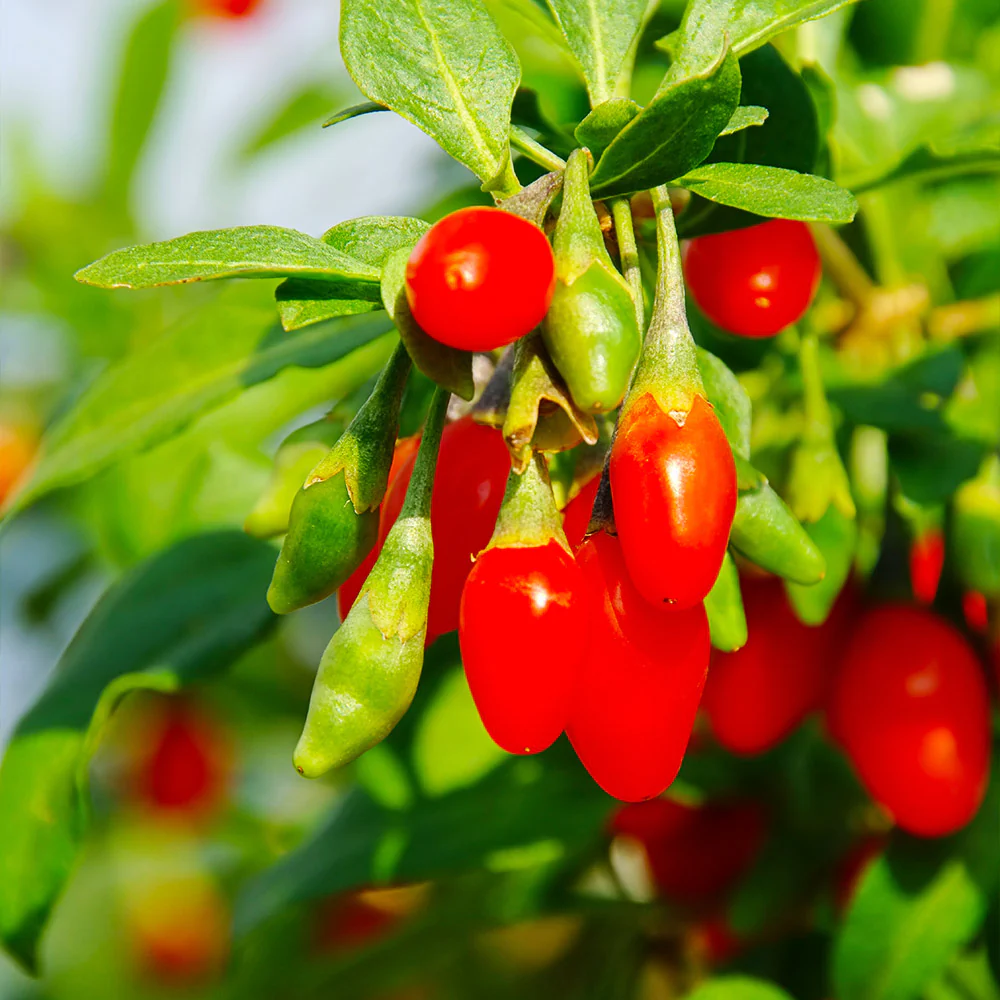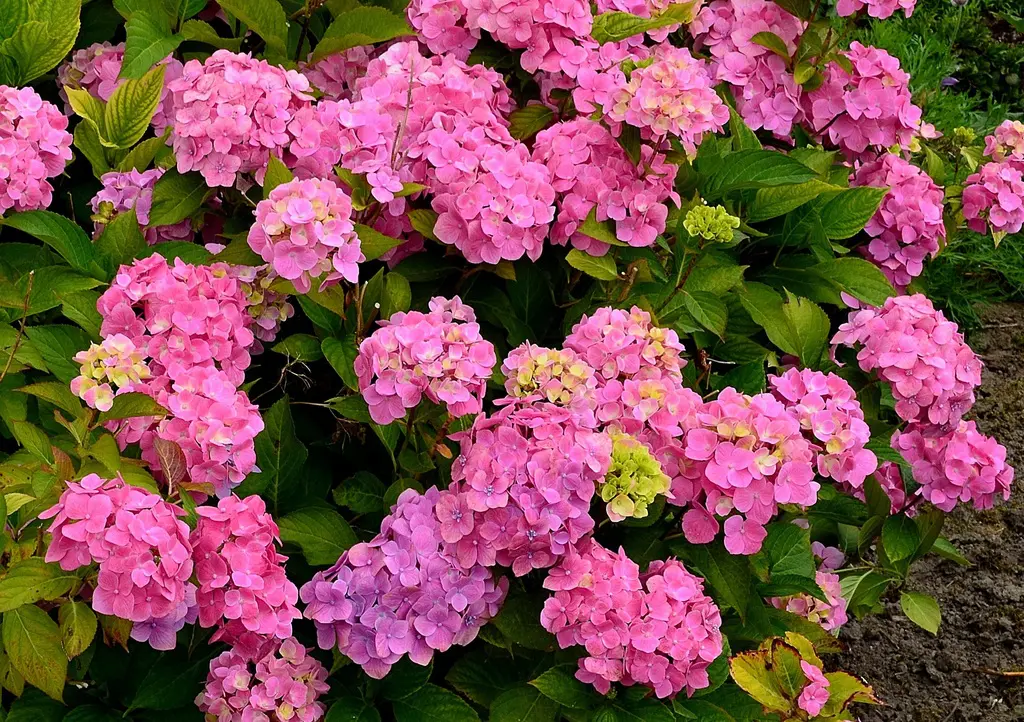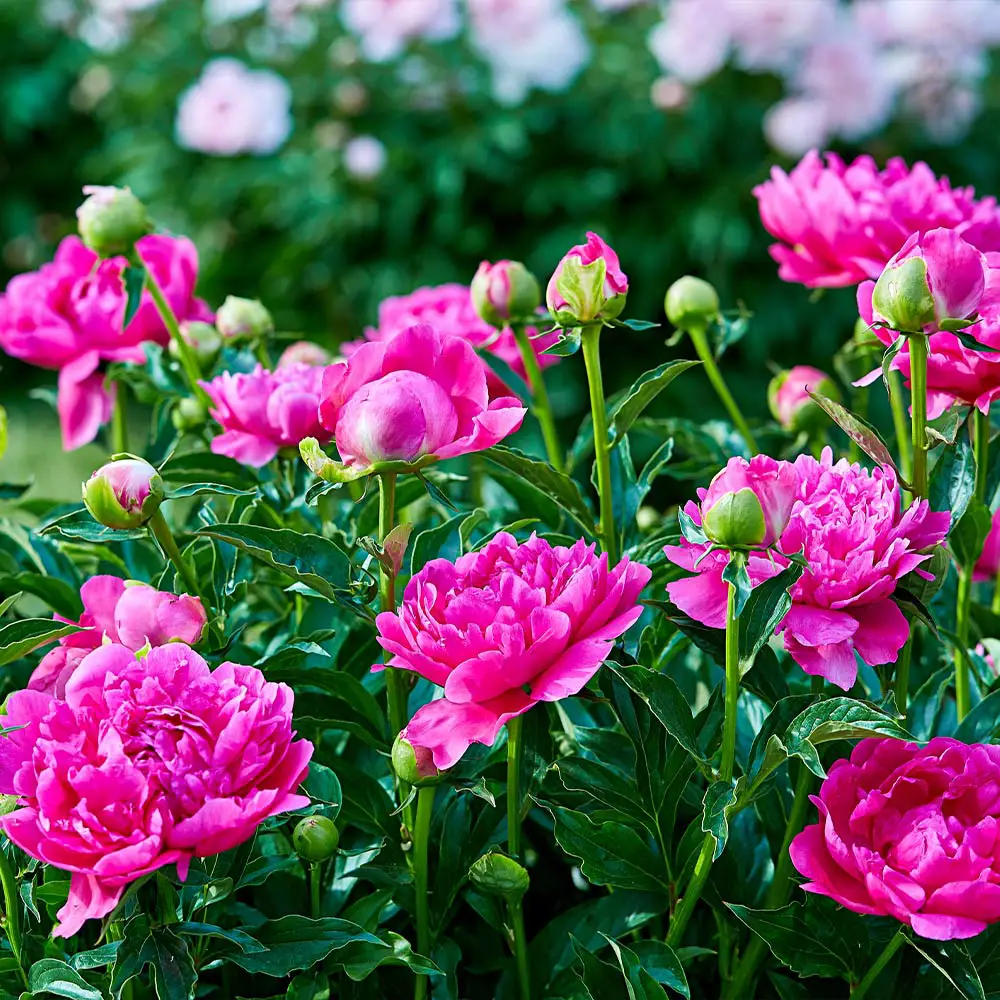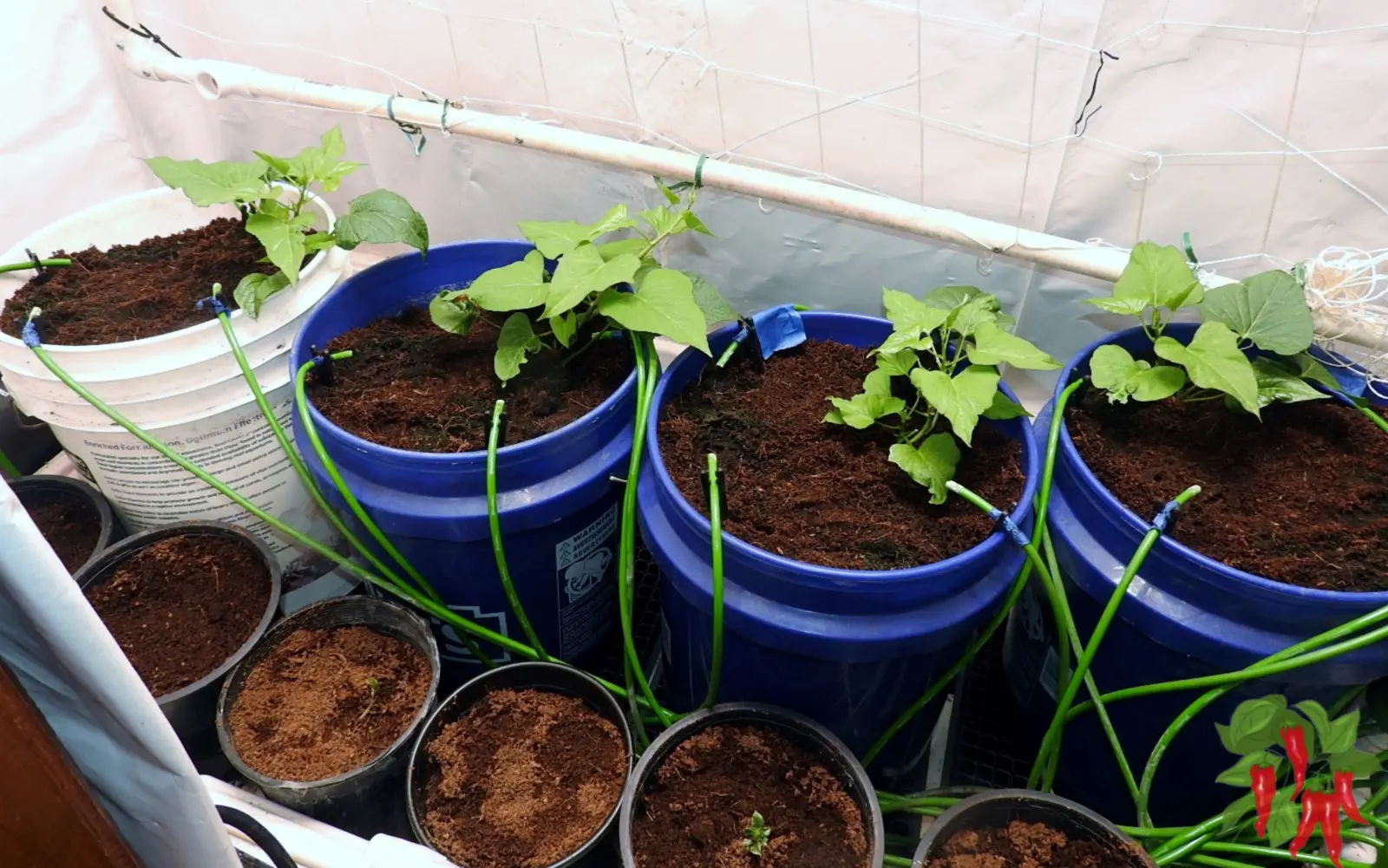This post contains affiliate links. If you buy something from one of our links we may earn a commission. Thanks
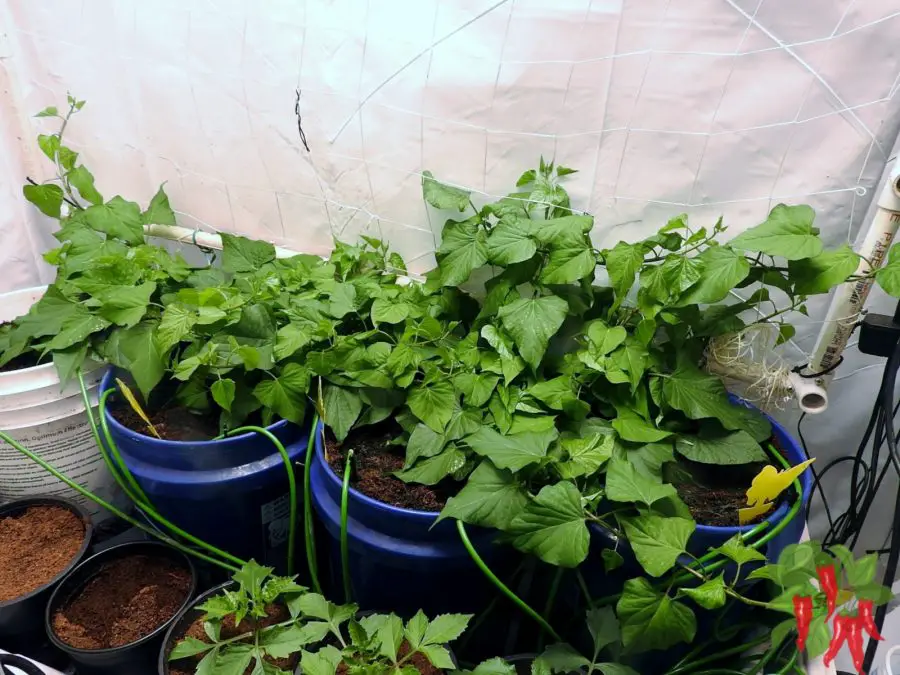
Discover the art of growing hydroponic sweet potatoes in a small closet grow room setup.
To set up a small closet grow room, start by clearing out the closet space and installing reflective material on the walls. Use LED lights for energy efficiency. Ensure proper ventilation with an exhaust fan. Use containers with good drainage and select an appropriate growth medium. Keep temperature and humidity levels in check for optimal plant growth.
Transform your closet into a thriving indoor garden with our step-by-step guide!
Are you eager to grow your own produce but limited on space? Enter the exciting world of hydroponics with a small closet grow room setup!
From containers to fans and lighting, let’s delve into the magic of transforming a tiny space into a thriving green hub.
What’s on the grow menu today? Sweet potatoes!
Cozy, convenient, and surprisingly simple, this small closet grow room journey is about to add a whole new dimension to your indoor gardening adventures.
Let’s dive in!
Introduction to Small Closet Grow Room Setup
Welcome to your new adventure in indoor gardening – setting up a small closet grow room.
As you venture into this space-efficient and fun way of nurturing plants, you’re about to uncover a fresh perspective on home gardening.
In this post, we’ll be covering all aspects of building your grow room, including lights, ventilation, and choosing the right medium.
And what’s our star crop? Delicious, nutrient-packed sweet potatoes! Stick around as we transform an underused closet into a vibrant, green, sweet potato-producing haven.
Ready to dig in? This video “SMALL CLOSET GROW ROOM SETUP HOW TO GROW HYDROPONIC SWEET POTATOES” will show you how it’s a bit of show and tell.
Welcoming You To: Setting Up a Small Closet Grow Room
First things first, let’s talk about what this blog post is all about.
Ever thought about transforming a compact, hardly-used closet into a sanctuary for lush, leafy greens?
Well, that’s exactly the journey we’re embarking on together.
We’re going to delve deep into the fascinating world of indoor gardening, specifically focusing on hydroponics.
As we navigate through this guide, we’ll be unearthing valuable insights on how to set up your very own small closet grow room.
By the end, you’ll be equipped with everything you need to know about lighting, air filtration, timing mechanisms, and reservoir management.
Trust me, this is going to be an enlightening experience that will redefine your perception of space and plant cultivation!
Growing Sweet Potatoes Hydroponically: A Perfect Match
Now that we’ve laid the groundwork, let’s get to the exciting part – the plant we’re going to nurture in our small closet grow room.
Enter the humble yet incredibly nutritious sweet potato.
I am growing Purple Okinawa Sweet Potatoes. I like the taste better than common store bought varieties. They are sweeter and drier and yes, they are purple inside.
Why sweet potatoes, you may wonder? Well, they love the conditions that hydroponics provides, they’re delicious, and their lovely vine-like growth adds an aesthetic appeal to your indoor garden.
Sweet potatoes are more than just an exciting choice; they’re a fun and rewarding challenge, especially for those new to hydroponics.
They are one of the few vegetables I can’t grow outdoors where I live. But indoors hydroponic sweet potatoes are not only a reality, but they thrive in my hydroponic grow closet.
In the realm of hydroponics, we’re able to control the nutrients, water, and light that our plants receive.
This control is particularly beneficial for sweet potatoes, which thrive under particular conditions.
We’ll be covering how to tailor your hydroponics system to their needs, discussing everything from nutrient solutions to drip line installation.
So, buckle up for an enjoyable ride, as we’re about to turn a small closet into a hydroponic sweet potato haven!
Understanding the Hydroponics Closet Grow Room
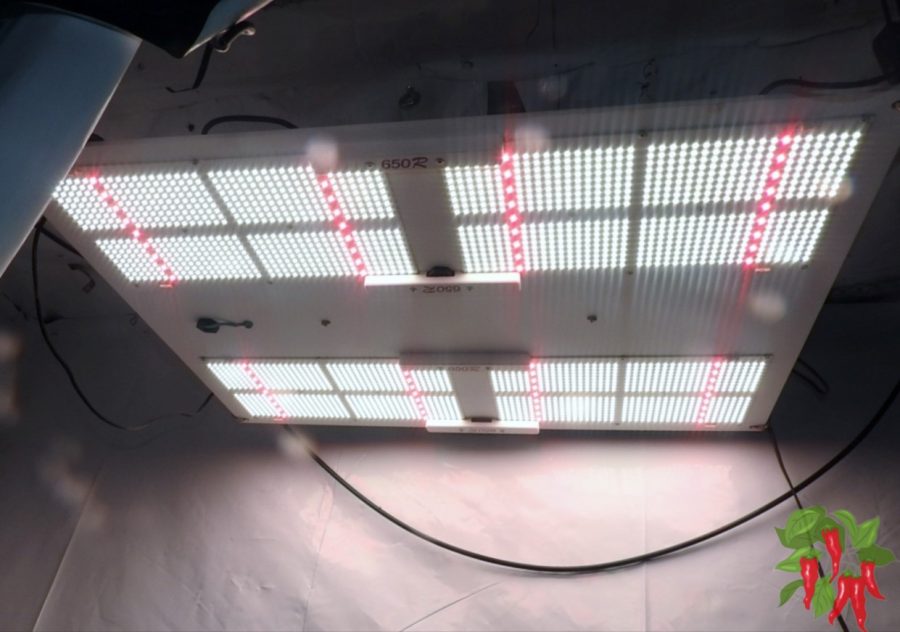
Alright, let’s take a step closer to our sweet potato dreams by diving into the world of hydroponics.
This section is like the map to our treasure, the hydroponics closet grow room.
Now, you might think, what’s this science-fiction sounding term?
Well, it’s far from fiction, my friends, and all about bringing the power of science to our gardening adventures!
A hydroponics closet grow room, in simple terms, is a small, indoor garden setup that uses water and nutrients instead of soil to grow plants.
It’s all about maximizing your available space, no matter how tiny, to cultivate fresh produce right at home.
And the best part is, you don’t have to worry about making a mess with soil, weeding or wrestling with garden pests!
From understanding how to control the environment within this mini eco-system, to learning the nuances of pH levels and nutrient solutions, this section will serve as your comprehensive guide.
We’re going to demystify the concept of a hydroponics system, helping you understand how and why it works, and how you can make it work for you.
Let’s embark on this journey of knowledge together and turn your closet into a thriving garden!
The Ins and Outs of a Closet Grow Room
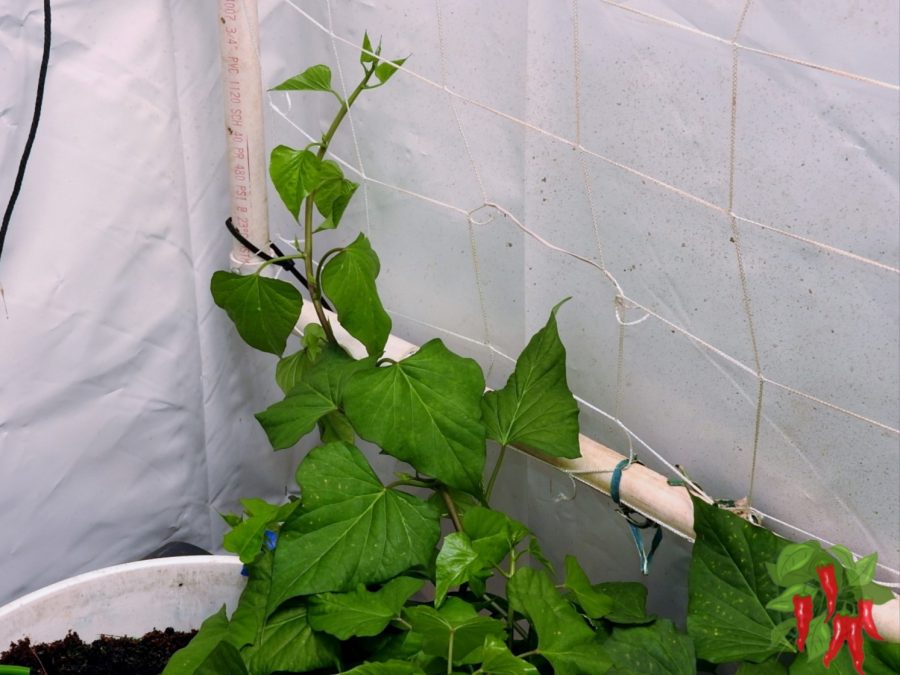
Let’s take a moment to visualize the core of our project, the closet grow room. Imagine a standard 3 by 6-foot closet.
It may not look like much, but that’s where the magic happens! The closet is cleverly transformed into an indoor garden, lined with Panda film to reflect the light back to the plants.
This room becomes the personal retreat for our sweet potatoes, where they stretch their roots and vines, experiencing optimal conditions to grow and flourish.
It’s all about making the most of our indoor space!
Inside this innovative space, you find key elements like a high-quality light setup, in our case, an HLG 650R, and a carbon scrubber to filter the air.
We’ll also explore the use of timers for watering and light control, ensuring our plants have the essentials they need exactly when they need them.
Yes, it’s a lot to take in, but don’t worry, we’re going to break it all down!
Why A Closet Grow Room is a Game Changer
Now you might wonder, why all this effort for a closet grow room? Well, my gardening enthusiast friend, there are a multitude of reasons.
A closet grow room, particularly one equipped with a hydroponics system, opens up new possibilities for indoor gardening.
It’s all about control and efficiency!
This type of setup allows you to grow plants all year round, irrespective of the outside weather.
You control the light, the temperature, the nutrients and you’re the puppeteer of your own mini ecosystem.
Even better yet it is automated so once set up it runs on autopilot.
This precise control means you can optimize your plant’s growth and potentially increase yields compared to traditional soil-based growing.
And let’s not forget about the variety! From sweet potatoes, as we’re focusing on here, to tomatoes, peppers, and more, a hydroponic closet grow room gives you the freedom to grow almost any plant indoors.
Moreover, it’s a brilliant solution for those with limited outdoor space, or for urban dwellers who yearn for a taste of self-sufficiency.
This setup is a testament to the fact that you don’t need a sprawling garden to grow your own food.
A humble closet can be the starting point of your indoor farming adventure.
Let’s buckle up and delve deeper into this exciting journey!
Essential Components of a Closet Grow Room Setup
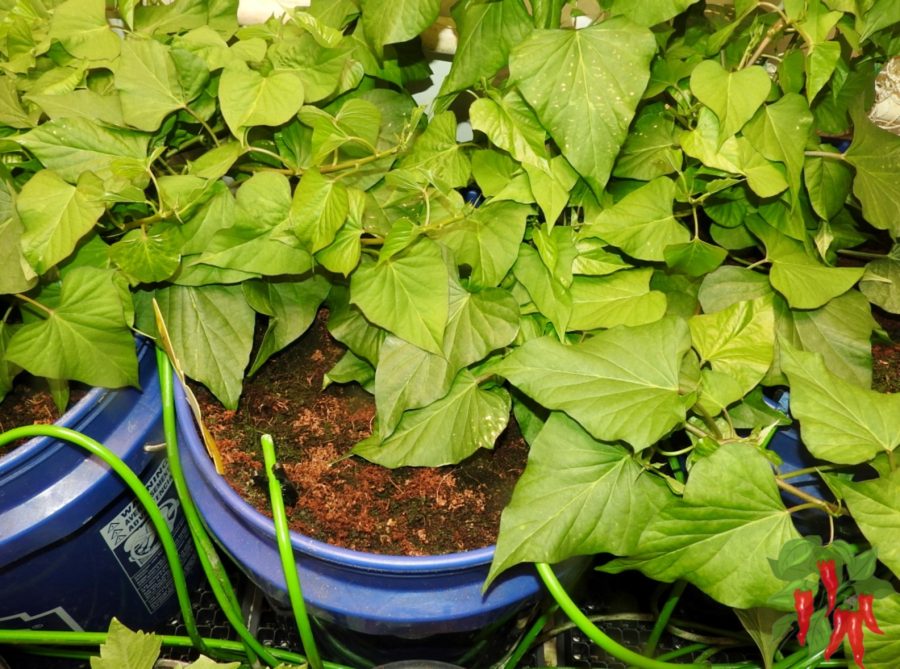
We’ve arrived at one of the most exciting parts of our journey: a look at the critical components that make up a closet grow room setup.
Picture this like an epic treasure hunt. We’ll be unearthing the essential items that, when pieced together, make our indoor hydroponic garden hum with life.
We’re talking about components that help regulate temperature and humidity, provide necessary light, and set up the perfect hydroponics system.
You’ll learn about the value of a good exhaust system, the role of airflow and water pumps, and why your choice of growing medium is far more than just a place for your sweet potatoes to call home.
By the end of this section, you’ll have a clear understanding of the must-haves for setting up your very own closet grow room, tailored for growing hydroponic sweet potatoes.
And the best part? Most of these components are multi-purpose and will serve you well no matter what you decide to grow next.
Intriguing, right? Let’s get started!
Let There Be Light: Unveiling the HLG 650R and Panda Film
First stop on our treasure hunt, the lifeblood of any hydroponic system: lighting. The HLG 650R LED is a superstar in this field.
Times change and it appears the 650R was replaced with the HLG 600Rspec. It is a bit smaller but it is half the price from when I bought mine.
With its adjustable power settings and white spectrum with enhanced red for fruiting, it mimics sunlight, creating the ideal environment for your sweet potatoes to grow.
You can adjust the intensity of the light according to the growing stage of your plants, allowing them to soak up the exact rays they need at any given time.
But that’s not all. Enter the Panda film, our secret weapon for maximizing light efficiency.
It’s not just a funky name; this dual-sided black and white film plays a significant role in reflecting light around your grow space, helping ensure no lumen goes to waste.
Breathe Easy: The Carbon Scrubber’s Role
Next, let’s talk air filtration. Our star player? The carbon scrubber.
It’s like a giant sponge for your closet grow room, soaking up any undesirable odors and airborne particles.
While not absolutely necessary it keeps dust particles out of the exhaust fan and if you are growing something stinky it neutralizes the odors.
And that’s great news for your sweet potatoes, providing them with a cleaner, purer environment to thrive in.
Keep it Fresh: Ventilation System Setup
Keeping the air moving in your small closet grow room is a must.
That’s where the ventilation system comes in, starring the bullet fan and flexible tubing as an exhaust fan.
Then there are 2 tower fans set up for a circular airflow around the plants themselves.
This dynamic duo works to maintain a fresh and oxygen-rich atmosphere for your plants while ensuring the temperature stays stable.
It’s like a cool sea breeze on a summer’s day. Just what your sweet potatoes need.
Be in the Know: CO2 Monitoring and Remote Sensors
Finally, we come to the brain of your operation: the monitoring systems. A CO2 monitor and controller plays a crucial role, ensuring your sweet potatoes have enough carbon dioxide to photosynthesize effectively.
But, of course, we’re not stopping there. We have a 24/7 nutrient monitor. With the help of remote sensors, you’ll have real-time data on pH, parts per million, and water temperature, right at your fingertips.
It’s like having your very own gardening assistant, keeping you updated on all the critical stats. Your plants will thank you for it.
So there you have it: the critical components of a successful closet grow room setup.
Each part plays a unique and indispensable role in the process, and together, they set the stage for your sweet potatoes to thrive.
Let’s move on to the next step, shall we?
Timing and Controls
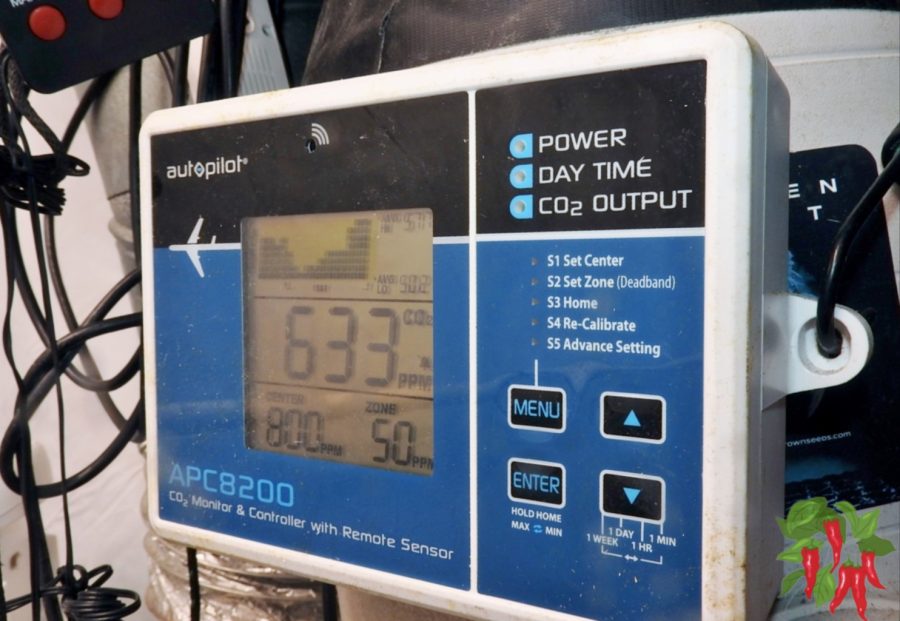
Alright, we’ve got our small closet grow room humming along nicely with all the necessary components.
But wait, we’re missing a couple of crucial elements – timing and controls!
Let’s dive into this exciting aspect, which feels like becoming the conductor of a grand symphony.
We’ll explore how you can orchestrate the rhythms of your grow room, from lighting schedules to nutrient delivery timings.
Stick around, and we’ll discover how to master this fine art of horticultural timing to yield a bumper crop of hydroponic sweet potatoes. Ready? Let’s get our hands a little greener!
All About Timing: The Heartbeat of Your Closet Grow Room
Timers, a grower’s best friend! They play a crucial role in streamlining our small closet grow room setup, especially in managing watering and lighting schedules.
Just imagine, you’re hosting a dinner party for your hydroponic sweet potatoes.
The timers are your precise chefs, serving light meals and watering soups at exactly the right moments.
No overcooking, no undercooking, just the perfect conditions for your sweet potatoes to thrive.
Getting in Control: The Variac Device
Next on the list is controlling fan speed. Have you heard of the Variac device? It’s a variable transformer.
Audiophiles use them to control turntable speed, but we use it for our fan.
Cheaper fan speed controls are available, but they create an annoying hum and alter the syne wave not the voltage itself, which is bad for the fan.
But this device simply lowers or raises the actual voltage itself.
It’s a handy tool that helps us maintain optimal airflows and temperature by adjusting fan speed.
Just like adjusting the volume on your radio, the Variac device lets you turn the dial to suit the temperature and humidity needs of your plants.
This grow closet has been running for several years and there are more efficient fans available today.
And if you fancy an upgrade, there are modern fans out there with built-in speed controls – neat, huh?
AC Infinity CLOUDLINE S6, Quiet 6” Inline Duct Fan with Speed Controller
Let’s Talk Air Circulation: The Tower Fans
Now, to keep the air in our small closet grow room from getting stale, we’ll need some help from tower fans.
Strategically positioned, they ensure a steady stream of fresh air that circulates around your plants, like a gentle summer breeze.
They keep things cool, help to prevent any pesky mold from settling in, and even strengthen your sweet potatoes by simulating natural wind conditions.
Remember, it’s not just about getting air into the grow room; it’s about making it dance around your plants in a healthy circulation!
Hydroponic Growing Medium
Well now, let’s shift our focus a bit and dig into the heart of our small closet grow room setup – the hydroponic growing medium.
Picture it as the cozy bed where your sweet potatoes will sleep, grow, and thrive.
It might not be traditional soil, but believe me, it’s every bit as nurturing and just perfect for our hydroponic setup.
From coconut coir to clay pebbles, we’ve got a lot to cover. So, strap in and prepare to become an expert in providing the ultimate comfort for your hydroponic sweet potatoes. Can’t wait to share all the insider tips with you!
In hydroponics it’s water that does the work and the term hydroponics translated from Latin actually means working water.
So, we use inert grow mediums and let the nutrient solution itself feed our plant roots.
Coco coir is actually a hydroponic medium. Clay pebbles called grow stones, hydroton or LECA also are used. Rockwool is another hydroponic grow medium.
Coco coir may look like soil and you can treat it as such but when you use it with hydroponic systems its true magic is released.
The Flood Tray
So, we start our journey in the realm of hydroponic growing mediums with the flood tray.
Imagine it as a shallow, wide dish where all the magic begins.
The 2 x 4 flood tray, my friends, is the base that holds our sweet potatoes snugly in place. But it’s not just any tray.
No, no! It’s designed with precise specifications to cater to the unique requirements of a hydroponic system. They are available in other sizes, usually 3 x 3 or 4×4 or larger.
This simple yet pivotal element aids in perfect water management, ensuring your sweet potatoes get the right amount of hydration. We’ll dive deeper into the nitty-gritty details so you can pick out the perfect one.
The flood tray has 2 holes drilled in it to accommodate 2 flood and drain fittings.
One lets water in the other drains back to the reservoir. I wasn’t really able to show them in the video but they look like this:
The Triad: Manifolds, Drip Lines, and Cocoa Coir
Next up, let’s chat about the dynamic trio that is manifolds, drip lines, and cocoa coir.
Now, manifolds might sound a bit technical, but they’re simply the distribution centers for our water supply in the hydroponic system.
I use a FloraFlex open flow bubbler.
Connected to these manifolds are the drip lines. Think of them as the gentle streams carrying precious water and nutrients straight to your sweet potatoes.
And that brings us to cocoa coir. This fantastic medium is what your sweet potatoes will call home.
Made from the husk of coconuts, it’s an excellent choice for hydroponic growing, offering superb water retention and just the right balance of aeration.
Your sweet potatoes will just love it!
Anything grown in coco coir produces a fantastic root system that is not achievable with soil or peat based growing mediums.
The Advantages of Open-Ended Drippers
Now, you might be wondering, what’s so great about open-ended drippers? I’m glad you asked!
These nifty little tools allow you to control the flow of water and nutrients, ensuring your sweet potatoes receive just what they need to thrive.
Plus, they’re super easy to keep clean, reducing the risk of clogs and ensuring smooth sailing for your hydroponic setup.
So, open-ended drippers? More like open-ended dreamers for your sweet potatoes!
Nutrient Solution and Watering System
The nutrient solution and watering system is the lifeblood of our hydroponic setup!
Like the perfect smoothie for your sweet potatoes, this blend of water and nutrients is what keeps them growing strong and tasty.
I use Jack’s Hydroponic nutrients. They have a 3-2-1 formula that is used by a lot of commercial growers because it is inexpensive and works very well.
Whether you’re a first-time gardener or a seasoned green thumb, we’re here to help you whip up the ideal concoction that’ll have your sweet potatoes saying, Thank you!
And let’s not forget about the watering system. Ensuring our precious plants get a sip of that nutrient-rich mix is crucial.
In this part, we’ll explore how to design an efficient and effective system that keeps your potatoes happy without turning your closet into a miniature rainforest.
So, let’s get to it, shall we? There’s a whole lot of goodness to cover!
The Reservoir and Nutrient Solution Setup
Let’s kick things off with the reservoir and nutrient solution. You might call the reservoir the kitchen of your grow room—it’s where all the magic happens.
The reservoir is essentially a container where we store our nutrient solution.
This special blend of water and nutrients is what we feed our sweet potatoes to make sure they’re getting everything they need to grow healthy and delicious.
It’s a bit like cooking. Just the right mix of ingredients can make a world of difference.
Here, we’ll help you get that mix just right, and show you how to maintain it over time.
Watering System and Timing
Next up is the watering system. It’s like the waiter that delivers the nutrient-rich meal to our sweet potatoes.
It’s all about timing and accuracy with this system.
We don’t want to leave our potatoes waiting for their meal or, worse, flood them with too much all at once.
We’ll cover how to set up a watering system that delivers the right amount of nutrients at the right times, so your sweet potatoes always get just what they need.
The Role of Flex Tubing
Finally, we have the Flex tubing, a vital part of our setup. Think of it as the expressway that connects the reservoir to the plants.
This flexible, reliable conduit plays a crucial role in transporting our nutrient solution from the reservoir to the hungry sweet potatoes, ensuring a smooth and efficient flow.
It’s simple, versatile, and effective and the backbone of our watering system.
We’ll explore how to use it best in our small closet grow room setup. Let’s dive in, shall we?
VII. Additional Setup Elements
Dive in with us as we explore additional elements of setting up your own small closet grow room.
Just like perfecting a secret recipe, it’s those extra ingredients that can take your setup from good to exceptional.
Whether it’s optimizing for temperature, introducing a trellis for plant support, or mastering the subtleties of plant training techniques, each component adds another layer to the richness of your grow room experience.
So, let’s leave no stone unturned and get ready to uncover those hidden gems that could turn your sweet potato grow room into a thriving green haven!
Dahlia Plants – A Colorful Surprise in Your Closet Grow Room
You might not think of Dahlias when picturing a closet grow room, but these bright flowers are a delightful addition!
Dahlias are versatile and come in an array of colors, adding a touch of brightness to your grow room.
But it’s not just about the aesthetics – growing different types of plants can help you learn about various plant needs and behaviors, enhancing your overall growing experience.
Waffle Grid – A Drainage Superstar
Next up on our journey is the humble waffle grid. This nifty tool might look simple, but it’s a powerhouse when it comes to ensuring efficient drainage.
Its design allows excess water to flow freely, preventing water-logging and promoting healthier root systems.
Think of the waffle grid as the unsung hero of your hydroponic closet grow room setup, silently supporting your plants from underneath.
My grid is made from seedling trays, but you can also use eggcrate for this.
Propped Up Flood Tray & Totes – Elevate Your Setup
Propping up your flood tray is a simple but effective trick to enhance your growing setup.
This strategic elevation allows for better water flow and easier access to your plants.
You need to raise it above your reservoir so the water can flow back into it. This top feed drip system is a recirculating hydroponic system where nutrients are reused.
In the past some growers used a drain to waste system where nutrients are only used once and then drained away. But this is not only wasteful it is bad for the environment.
Plus the raised plants are easy to see, it makes maintenance tasks, like checking for pests or dead leaves, a breeze.
And let’s not forget the humble tote! These versatile containers are used to support the flood tray. My flood tray straddles 2 27-gallon totes.
One is used for storing your nutrient solution. The other is empty and just serves to hold up one end of the tray.
Between them there is room to store all your gardening tools or extra nutrients, keeping your grow room organized and efficient.
Who knew a small adjustment could make such a big difference!
Managing a Hydroponics System
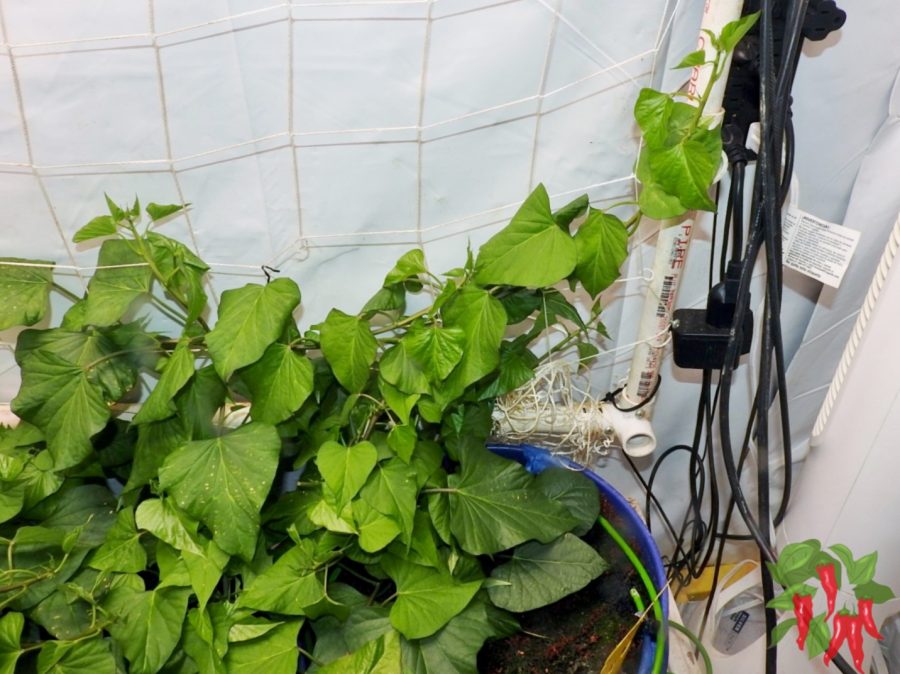
Ready to become the ultimate caretaker of your hydroponic haven? Well, you’re in the right spot!
Our next section delves into the ins and outs of managing a hydroponics system.
From maintaining optimal nutrient levels to ensuring proper water circulation, we’ll be going through it all.
But don’t worry, it’s not as daunting as it sounds.
With some time, patience, and our guidance, you’ll be navigating through your hydroponic grow room setup like a pro in no time.
Now, let’s dive into the fascinating world of hydroponic system management!
Keeping a Close Eye on Water Levels and Nutrient Strengths
It’s like being a watchful guardian, really! Monitoring water levels and nutrient strengths is absolutely vital when it comes to your hydroponics system.
Just imagine your plants are like little athletes, and the water and nutrients are their training diet.
Just as an athlete can’t perform at their peak without the right food and hydration, plants need the right amounts of water and nutrients to flourish.
From the perfect pH balance to just the right mix of essential nutrients, we’ll walk you through how to keep your plants well-fed and hydrated!
A Case Study: Dealing with Calcium Deficiency
Now, what happens when things don’t go as planned? Take calcium deficiency, for instance.
It can be a real party-pooper, showing up uninvited and causing all sorts of trouble like stunted plant growth and dead brown spots on leaves.
But don’t worry, we’ve been there, and we’ve got your back! In this part of our guide, we’ll share our own experiences with calcium deficiency and how we adjusted our nutrient solution to combat it.
Coco coir is hungry for calcium and magnesium and needs it to work effectively and to provide the other nutrients your plants need.
I erred on the side of caution and started with a low nutrient strength of about 450 ppms.
I did not want to chance burning the roots on my newly planted sweet potato slips.
But that is barely enough to feed the coco and not enough to feed the plants.
Things happen fast in hydroponics and one day everything was fine. Then overnight brown spots.
Fortunately, most problems can be corrected quickly too. So, by doubling the strength of my nutrient solution the problem was solved.
Remember, troubleshooting is just part of the journey, and overcoming these challenges is what makes it all the more rewarding!
The Art of Continual Monitoring and Adjustment in Hydroponics Systems
And finally, we’ll talk about why continual monitoring and adjustment in hydroponics systems is so important.
It’s like tuning a guitar, you’ve got to keep adjusting to hit the right notes. It won’t stay in tune by itself.
From changing seasons to evolving plant needs, there are a myriad of factors that might warrant adjustments in your hydroponic system.
But hey, this is where the fun is. It’s all about staying responsive and getting to know your plants better.
So, let’s gear up and learn about the art of maintaining a fine-tuned hydroponics system together!
Adapting to Different Plants
All right, let’s dive into a whole new world of adapting your small closet grow room to accommodate different plants!
Imagine this: you’ve mastered growing sweet potatoes hydroponically, and now you’re thinking, What’s next?
Well, my friend, the sky’s the limit. Each plant species is unique, with its own set of needs and preferences, almost like they have their own personalities!
In this section, we’ll guide you on how to flex and adapt your setup to accommodate a variety of green buddies.
Whether you’re eyeing that juicy tomato or dreaming about aromatic herbs, we’ve got you covered.
Let’s expand your green portfolio together!
Tales from My Green Adventures: Growing Cannabis and Sweet Potatoes
It’s time to get a little personal here, sharing my own green-thumb adventures.
You’ve heard me chatter on about sweet potatoes and yes, they’re amazing.
But in the past I’ve also dipped my toes into the fascinating world of cannabis cultivation.
And that is actually how I learned to grow with hydroponics.
But now I only grow veggies and flowers.
Both sweet potatoes and cannabis have unique growth cycles and requirements, but learning about them in my small closet grow room has been a fantastic learning experience.
It was fascinating to observe the differing responses to the same environment, making adjustments along the way.
Embrace the Learning Curve: Trying Out New Plants
In the world of hydroponics, experimentation is your best friend.
No two plants are identical, and that’s what makes the whole experience so intriguing and rewarding.
My advice to you is simple: do not shy away from the trials and errors of growing new plants in your setup.
In fact, embrace it! The secret is in understanding that each misstep is an opportunity to learn and grow, pun intended!
Remember, even the most seasoned growers face challenges.
So, roll up your sleeves, dive in, and let nature take its course and you’ll be amazed at what you can achieve.
Why a Closet Grow Room
Alright, you’ve been patient, trooping through this long-winded ramble about closet grow rooms.
But the question might still be burning in your mind: why, exactly, a closet?
Let’s clear the air. You see, utilizing a closet for your hydroponic setup is not just about making the best of small spaces.
It’s about privacy, controlled environment, and the pure joy of seeing life thrive in the most unexpected of places.
In this section, we’ll take a deep dive into all the ‘whys’ and ‘how’s’ of a closet grow room setup.
Trust me, by the end of this, you’ll be peering into your own closets with a newfound interest. Let’s explore this together, shall we?
The Versatility of Closet Grow Rooms or Grow Tents
Who said closets are just for storing clothes or hiding holiday gifts?
The beauty of a closet grow room is in its flexibility.
It’s like having a mini green house that fits in the corner of your bedroom, basement, or even the attic!
From nurturing your favorite herbs to growing vine-ripe tomatoes or fragrant roses, the possibilities are endless.
And if you’re not into permanently sacrificing your storage space, grow tents come to the rescue.
Easy to set up and dismantle, they offer a practical, portable solution for your green thumb pursuits.
The Importance of Light Enclosure
Let’s shed some light on this, quite literally. Indoor grow rooms need to control light exposure effectively to emulate the plant’s natural cycle.
That’s where your closet or grow tent excels. With its enclosed structure, it ensures that your plants get just the right amount of light, no more, no less.
Plus, the confined space is perfect for light reflection, maximizing the efficiency of your chosen light source.
Remember, light is life for your plants. Giving them a stable and controlled light environment is the first step towards a thriving indoor garden.
Advantages of Hydroponics Indoor Growing
Ah, hydroponics! The magic of growing plants without soil, where water and nutrients directly meet the roots.
But why go hydroponic indoors? Well, for starters, it’s the control freak’s dream.
You get to micromanage everything: the water, nutrients, light, temperature, even the CO2 levels.
Your plants get exactly what they need, when they need it, without the unpredictability of outdoor conditions.
Second, it’s efficient. No soil means no weeding, fewer pests and diseases, less watering, and faster growth.
And let’s face it, it’s kind of cool to play mad scientist with your plants.
So, whether you’re an experienced grower or just starting, give hydroponics a shot. It’s rewarding, sustainable, and a whole lot of fun.
Lighting Considerations
Welcome to the dazzling world of indoor gardening lighting!
One of the essential ingredients for your plants’ happiness in a small closet grow room setup is their light diet.
From old-school HPS and metal halide bulbs to the tech-savvy LED lights, the choices can be overwhelming. But hey, no need to stress!
This section is all about guiding you through the maze of artificial lights, discussing their benefits, drawbacks, and most importantly, how they impact your plants’ health.
Whether you’re trying to simulate summer in winter or extending daylight hours, having the right lighting can make a world of difference.
So, let’s switch the light on and get to know more about it, shall we?
Embracing the LED Revolution
First things first, let’s talk about LEDs, those small, colorful dots that are changing the face of indoor gardening.
Why LED lights, you might ask? The beauty of LEDs lies in their efficiency and versatility.
These little powerhouses consume less energy, generate less heat, and most importantly, they can emit a wide spectrum of light that’s perfect for your leafy buddies.
It’s not just about cost-saving, but LEDs can create a perfect mini sun for your plants without running your energy bill sky-high.
The LED vs. HPS Showdown
Stepping into the arena of indoor lighting, it’s often an LED versus HPS match.
High-Pressure Sodium (HPS) lights have had their moment under the spotlight, but LEDs are the rising stars.
Unlike HPS lights that emit a yellow-orange glow, LEDs can replicate the full spectrum of sunlight, catering to the different needs of your plants throughout their growth stages.
Also, LEDs win brownie points for their longevity and energy efficiency.
On the Hunt for the Best LED Lights
Navigating the sea of LED brands can feel like an endless quest. But fret not, I’ve got your back.
Over the years, I’ve tested a good bunch of them and can confidently vouch for a few.
Although your choice ultimately depends on your specific needs, a few brands consistently deliver on quality and reliability.
I already mentioned HLG or Horticulture Lighting Group.
I think they are the best money can buy but many new growers want something more affordable. I get it.
Another good light I also use is the Spider Farmer SF2000. It’s cheaper than my HLG lights but is sturdy, well made and affordable. It is perfect for a 2×4 grow tent or closet.
Why Grow Hydroponic Sweet Potatoes in a Closet
Did you ever imagine that the humble sweet potato could be the superstar of your small closet grow room setup? Sounds intriguing, right?
Sweet potatoes not only bring a pop of color to your indoor garden but also pack a punch of nutritional benefits. But the story doesn’t end here.
Cultivating this root vegetable indoors might be an unexpected choice, but it’s one that brings along a whole set of fascinating challenges and rewards.
So, buckle up, as we embark on a flavorful journey of transforming your closet space into a sweet potato sanctuary!
Sweet Potato Love: Personal Reasons for Indoor Cultivation
The appeal of growing sweet potatoes indoors isn’t just about a green thumb experiment. It’s a passion!
From their attractive vine-like foliage that decorates your small closet grow room setup, to the anticipation of harvesting those deliciously sweet tubers, there’s a certain magic that lures you into cultivating this earthy delight indoors.
And of course, there’s nothing quite like cooking up your home-grown produce!
Climate Woes: The Challenges of Outdoor Sweet Potato Growing
For those of us living in cooler or unpredictable climates, growing sweet potatoes outdoors can be a game of chance.
These heat-loving plants demand a long, warm growing season. Cold snaps and frosty conditions? Definitely not their cup of tea.
This makes indoor cultivation a clever workaround, providing a haven where your sweet potatoes can flourish, regardless of the weather outside.
Sweet potatoes and melons are two warm weather crops that I cannot grow outdoors in my cool maritime climate.
But in my hydroponic grow closet they can thrive any time of year.
Indoor Advantage: Reaping the Benefits of Growing Plants Indoors
Growing plants indoors, especially in a compact and controlled environment like a closet grow room, is like having your private Eden.
You’re in charge!
From precision temperature control to regulating light exposure, every element is at your fingertips.
And let’s not forget about pest management. It’s much easier to keep those pesky bugs at bay within the confines of an indoor garden.
So, growing sweet potatoes indoors? It’s like turning challenges into opportunities, one tuber at a time!
Small Closet Grow Room FAQs
When it comes to utilizing a small space for gardening, converting a closet into a grow room can be an efficient and practical choice.
Many home gardeners are tapping into the benefits of indoor cultivation, but this shift comes with its own set of challenges and considerations, such as ventilation, temperature control, and lighting.
Whether you’re planning to grow herbs, vegetables, or ornamental plants, this FAQ aims to address some common questions that might arise during your closet-to-growroom transformation.
Q: How do you turn a small closet into a grow room?
A: To turn a small closet into a grow room, clear out the space, install reflective material on the walls to maximize light exposure, and set up your lighting system.
Ensure proper ventilation and temperature control by adding fans or exhaust systems. Finally, add your growing containers and plants.
Q: How do I keep my closet grow room cool?
A: Keeping your closet grow room cool can be achieved by using exhaust fans to remove hot air and bring in cool air.
Some people also use air conditioners or cooling systems specifically designed for grow rooms.
Q: Can I turn my closet into a grow room?
A: Yes, you can turn a closet into a grow room as long as you can provide adequate light, ventilation, and temperature control.
Ensure that you have the appropriate permissions if you’re renting or have housing restrictions.
Q: Do you need ventilation in a grow room?
A: Yes, proper ventilation is essential for a grow room. It helps control temperature, removes excess moisture, and brings in fresh air, which is important for plant growth.
Q: Can a grow room be too hot?
A: Yes, a grow room can be too hot, and excessive heat can harm your plants.
The ideal temperature depends on what you’re growing, but most plants prefer a range between 70-80°F (21-27°C).
Excessive heat can lead to plant stress, wilting, and reduced yield.
Small Closet Grow Room Setup Final Thoughts
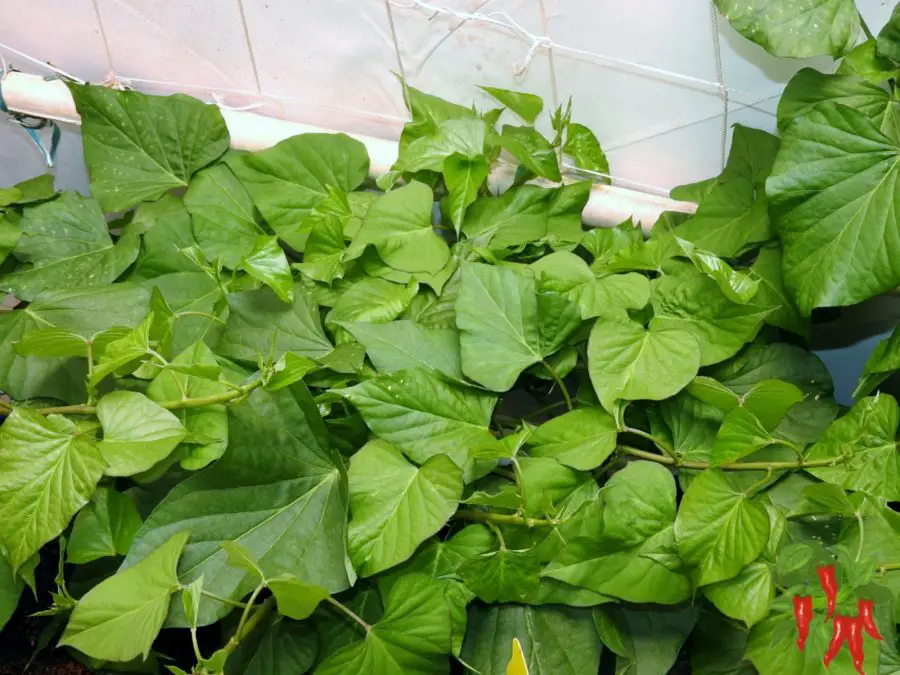
So, we’ve journeyed together through the ins and outs of a small closet grow room setup.
From understanding the nuances of hydroponics to tackling the challenges and joys of growing sweet potatoes, it’s been a wild ride!
As we draw the curtains on this adventure, remember that each grow room is a unique ecosystem, your personal slice of Mother Nature.
So, stay curious, keep experimenting, and most importantly, continue enjoying the delightful dance of growth and harvest.
Because at the end of the day, that’s what makes indoor gardening so rewarding, isn’t it? Cheers to your thriving indoor garden!
The Recap
Wow, what a journey we’ve been on, right? We’ve delved deep into the world of hydroponics, particularly focusing on the concept of small closet grow room setups.
From the vital elements that make a grow room function, to understanding the science behind hydroponic systems and their incredible benefits, we’ve covered it all.
And let’s not forget about our star of the show, the sweet potato! Navigating the challenges of indoor growing and watching our leafy friends thrive has been nothing short of rewarding.
Green Thumbs Unite!
To all you aspiring hydroponic gardeners, I urge you to take the plunge. The world of indoor growing is not just fascinating but also immensely rewarding.
Think about it. You can grow fresh, organic produce right in your closet!
And sweet potatoes? They’re just the beginning. Once you get the hang of it, the sky’s the limit.
Until Next Time, Gardening Aficionados
So, there we have it. I hope you’ve found this guide insightful and that it fuels your enthusiasm to embark on your own hydroponic journey.
Remember, every plant you grow teaches you something new.
So, keep those green thumbs busy, stay patient, and reap the rewards that your indoor garden will bring.
Happy gardening, friends! Here’s to a future filled with lush, healthy plants!













